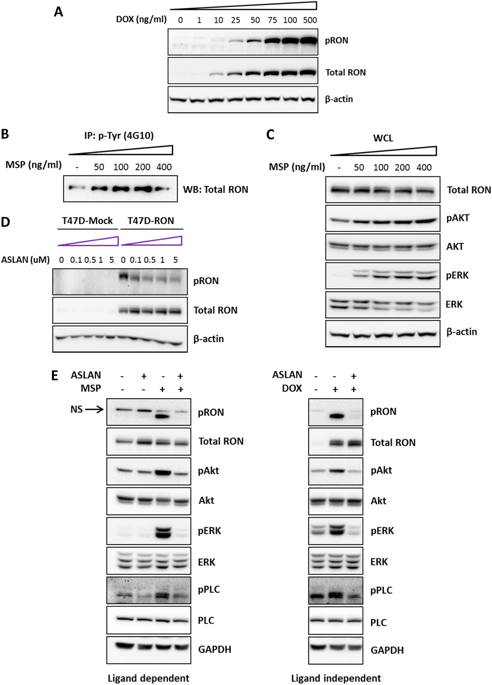npj Breast Cancer ( IF 6.5 ) Pub Date : 2018-11-09 , DOI: 10.1038/s41523-018-0091-5 Najme Faham , Ling Zhao , Alana L. Welm

|
Metastasis is the biggest challenge in treating breast cancer, and it kills >40,000 breast cancer patients annually in the US. Aberrant expression of the RON receptor tyrosine kinase in breast tumors correlates with poor prognosis and has been shown to promote metastasis. However, the molecular mechanisms that govern how RON promotes metastasis, and how to block it, are still largely unknown. We sought to determine critical effectors of RON using a combination of mutational and pharmacologic strategies. High-throughput proteomic analysis of breast cancer cells upon activation of RON showed robust phosphorylation of ribosomal protein S6. Further analysis revealed that RON strongly signals through mTORC1/p70S6K, which is mediated predominantly by the PI3K pathway. A targeted mutation approach to modulate RON signaling validated the importance of PI3K/mTORC1 pathway for spontaneous metastasis in vivo. Finally, inhibition of mTORC1 with an FDA-approved drug, everolimus, resulted in transient shrinkage of established RON-dependent metastases, and combined blockade of mTORC1 and RON delayed progression. These studies have identified a key downstream mediator of RON-dependent metastasis in breast cancer cells and revealed that inhibition of mTORC1, or combined inhibition of mTORC1 and RON, may be effective for treatment of metastatic breast cancers with elevated expression of RON.
中文翻译:

mTORC1是RON依赖型乳腺癌转移的关键介质,具有治疗潜力
转移是治疗乳腺癌的最大挑战,在美国每年转移杀死超过40,000名乳腺癌患者。RON受体酪氨酸激酶在乳腺肿瘤中的异常表达与不良预后相关,并已显示出可促进转移。然而,控制RON如何促进转移以及如何阻止其转移的分子机制仍是未知之数。我们试图使用突变和药理学策略的组合来确定RON的关键效应物。RON激活后对乳腺癌细胞进行的高通量蛋白质组学分析显示核糖体蛋白S6的磷酸化水平很高。进一步的分析表明,RON通过mTORC1 / p70S6K强烈发出信号,该信号主要由PI3K途径介导。有针对性的突变方法来调节RON信号验证了PI3K / mTORC1途径对于体内自发转移的重要性。最后,用FDA批准的药物依维莫司对mTORC1的抑制作用导致已建立的RON依赖转移的瞬时缩小,以及对mTORC1和RON的联合阻滞延迟进展。这些研究已经确定了乳腺癌细胞中RON依赖性转移的关键下游介质,并揭示了抑制mTORC1或同时抑制mTORC1和RON可能有效治疗RON表达升高的转移性乳腺癌。并同时阻断mTORC1和RON延缓了进展。这些研究已经确定了乳腺癌细胞中RON依赖性转移的关键下游介质,并揭示了抑制mTORC1或同时抑制mTORC1和RON可能有效治疗RON表达升高的转移性乳腺癌。并同时阻断mTORC1和RON延缓了进展。这些研究已经确定了乳腺癌细胞中RON依赖性转移的关键下游介质,并揭示了抑制mTORC1或同时抑制mTORC1和RON可能有效治疗RON表达升高的转移性乳腺癌。









































 京公网安备 11010802027423号
京公网安备 11010802027423号